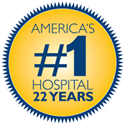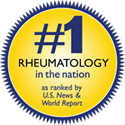A salivary gland scan is a nuclear medicine test that evaluates the function of the salivary glands. These glands include the parotid and submandibular glands, located on both sides of the neck just below the ears and under the jaw. Salivary gland function is assessed by the pattern of uptake and secretion of a radioactive tracer, technetium 99.
Salivary gland scans can help evaluate patients with persistent symptoms of a dry mouth. They are also utilized to evaluate salivary gland swelling due to either infection, inflammation, or obstruction.
Salivary gland scans are safe. The level of radioactivity used to obtain the images is low. However, women who are pregnant should not have this test unless absolutely necessary. If you are breastfeeding, the physician performing the test will advise you on the duration of time needed to elapse before you can resume nursing your child.
The salivary gland scan, also called parotid gland scintigraphy, is a non-invasive test. It is typically performed in a hospital nuclear medicine department or out-patient radiology facility. You will receive an injection of a low-level radioactive marker and will be positioned in front of or under a gamma scintillation camera, which detects the radiation and produces an image. Imaging typically begins immediately after the injection to observe the progressive accumulation of the radioactive tracer in the glands. After 45 minutes you will be given a lemon drop, or a similarly sour substance, to stimulate the emptying of the salivary glands. Another set of images is then made for comparison purposes. The procedure takes about 60 minutes.
No special preparations are needed for this test. It is not necessary to fast or to restrict medications before testing.


